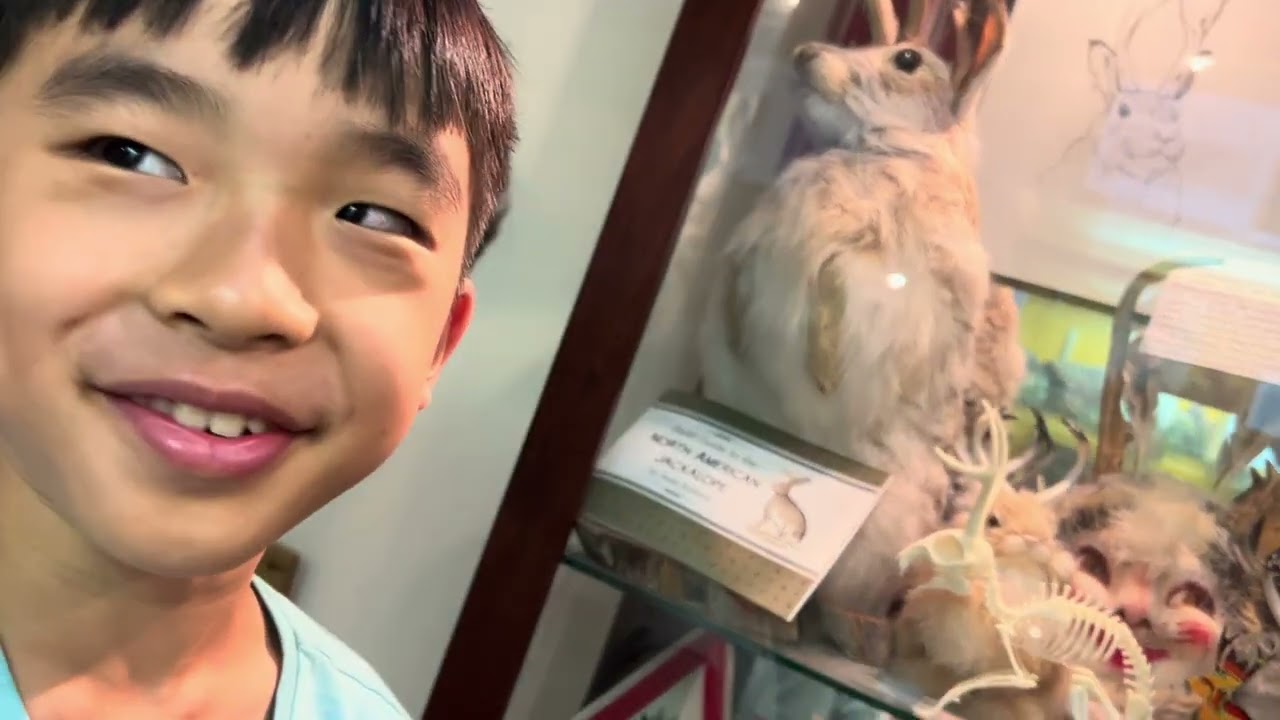The 10 strangest places in America

here are 10 of the strangest places in America:
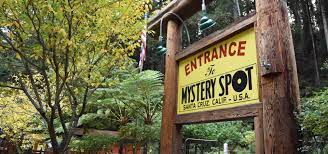
1. The Mystery Spot (Santa Cruz, California):
This gravitational anomaly creates optical illusions and makes objects appear to defy the laws of physics.
The Mystery Spot is a gravitational anomaly located in the redwood forests just outside of Santa Cruz, California.
It is a circular area of effect around 150 feet or 46 meters in diameter.
Within the Mystery Spot you will be stunned as your perceptions of the laws of physics and gravity are questioned.
But don't take our word for it, come and decide for yourself! The Mystery Spot was discovered in 1939 by a group of surveyors and opened to the public in 1940.
The Mystery Spot has amazed and perplexed hundreds of thousands of visitors from all over the world, and many return time and time again to experience these puzzling variations of gravity, perspective, and height.
Some speculate that cones of metal were secretly brought here and buried in our earth as guidance systems for their spacecraft.
Some think that it is in fact the spacecraft itself buried deep within the ground.
Other theories include carbon dioxide permeating from the earth, a hole in the ozone layer, a magma vortex, the highest dielectric biocosmic radiation known anywhere in the world, and radiesthesia.
Whatever the cause is, it remains a mystery.

2. The Clown Motel (Tonopah, Nevada):
Known for its creepy clown-themed decor, this motel is filled with hundreds of clown figurines and is adjacent to an old cemetery.
The Clown Motel is a clown-themed motel along north Main Street in Tonopah, Nevada, which has been referred to as "America's scariest motel".
The building is located adjacent to the historic Tonopah Cemetery, where the father of the original owners is buried.
History
The 31-room Clown Motel was opened in 1985 by Leroy and Leona David in honor of their late father Clarence David whose collection of over 150 clown statues was used to decorate the property.
In 1995, Bob Perchetti bought the motel and operated it for 22 years until 2017 when he put the property up for sale for $900,000.
Two years later the property was purchased by Vijay Mehar who appointed his former art director and family friend Hame Anand as CEO, who gave a new facelift to the motel and increased the collection from 600 clown statues to over 2,000 pieces of clown memorabilia
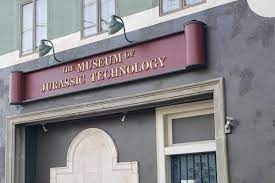
3. The Museum of Jurassic Technology (Los Angeles, California):
This eccentric museum combines scientific exhibits with fictional and artistic elements, blurring the line between fact and fiction.
The Museum of Jurassic Technology at 9341 Venice Boulevard in the Palms district of Los Angeles, California, was founded by David Hildebrand Wilson and Diana Drake Wilson in 1988.
It calls itself "an educational institution dedicated to the advancement of knowledge and the public appreciation of the Lower Jurassic", The relevance of the term "Lower Jurassic" to the museum's collections is left uncertain and unexplained.
Fairly Safely Venture: String Figures and their Venerable CollectorsThe museum's collection includes a mixture of artistic, scientific, ethnographic, and historic items, as well as some unclassifiable exhibits; the diversity evokes the cabinets of curiosities that were the 16th-century predecessors of modern natural history museums.
The factual claims of many of the museum's exhibits strain credibility, provoking an array of interpretations.
The museum contains an unusual collection of exhibits and objects with varying and uncertain degrees of authenticity.
The New York Times critic Edward Rothstein described it as a "museum about museums", "where the persistent question is: what kind of place is this?"
Smithsonian magazine called it "a witty, self-conscious homage to private museums of yore . . . when natural history was only barely charted by science, and museums were closer to Renaissance cabinets of curiosity."
In a similar vein, The Economist said the museum "captures a time chronicled in Richard Holmes's recent book The Age of Wonder, when science mingled with poetry in its pursuit of answers to life's mysterious questions.
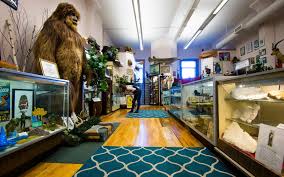
4. The International Cryptozoology Museum (Portland, Maine):
Dedicated to the study of hidden or unknown animals, this museum explores the world of cryptozoology and showcases artifacts related to legendary creatures like Bigfoot and the Loch Ness Monster.
Cryptozoology is the study of animals that have not yet been proven to exist. Bigfoot. Kraken. Yeti. The Loch Ness Monster.
The Ghost Deer (deer that’s impervious to bullets). The Globster (decaying sea monster shaped like a blob). The Loveland frog (frog that stands upright on two feet). Mothman (lol). The Ayia Napa sea monster (can’t stop raving).
Man-Eating Trees.Yes, Cryptozoology is a pseudoscience that’s all about proving these animals truly exist, and the International Cryptozoology Museum is the only museum in the world that’s dedicated to showcasing the hidden creatures that may be living alongside us.
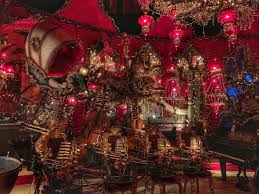
5. The House on the Rock (Spring Green, Wisconsin):
This bizarre attraction features a sprawling complex filled with eclectic collections, including a giant carousel, a room full of automated musical instruments, and a replica of a whale fighting a squid.
The "house" itself is atop Deer Shelter Rock, a column of rock approximately 60 by 70 feet (18 by 21 m), by 200 feet (61 m) on the top, which stands in a forest nearby.
Additions were made to the original structure and other buildings were added over the course of several decades.
The complex now features "The Streets of Yesterday", a re-creation of an early twentieth-century American town; "The Heritage of the Sea", featuring nautical exhibits and a 200-foot model (61 m) of a fanciful whale-like sea creature; "The Music of Yesterday", a huge collection of automatic music machines; and what the management bills as "the world's largest indoor carousel", among other attractions.
The carousel at the House on the Rock features 269 carousel animals, 182 chandeliers, over 20,000 lights, and hundreds of mannequin angels hanging from the ceiling.
The carousel has no horses. During the winter, the attraction features a Christmas theme, with decorations and a large collection of Santa Claus figures.
Many of the bathrooms are decorated with strange objects, including mannequins, flowers, and preserved animals.
The earlier structures, namely the House on the Rock itself, the Gate House, and the Mill House, are reminiscent of the work of Frank Lloyd Wright, though much less coherently designed than is characteristic of Wright, given its patchwork of external structures and interior spaces.
According to a likely apocryphal story, the building actually began partly to spite the master architect, who ran his Taliesin communal school near Spring Green.
These early structures feature exposed stone, low ceilings, dark woodwork, and antiques on display.
Jordan sold the house in 1988 to a friend who continued building on the site, adding to the collections of knick-knacks and exhibits featuring authentic pieces, reproductions, and specially-made examples of everything.
The most recent addition is the "Spirit of Aviation", a collection of large model airplanes in a themed room.
Another exhibit, the "Transportation Building", is under construction, but visitors can walk through and view the work in progress.
In the same year, the Wisconsin State Journal published a four-part series on "The House on the Rock", which reporter Marv Balousek later expanded into a self-published book entitled House of Alex.
According to Balousek, Jordan Sr. hired "drunks and bums" from the Madison streets to help blast the rock. Balousek says that according to Sid Boyum, these workers were sometimes paid with whiskey and sometimes by check, but that Alex Jordan Jr. destroyed the canceled checks later to further a myth that he had personally built the house himself.
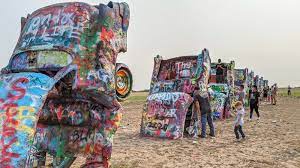
The Cadillac Ranch (Amarillo, Texas): 6.
A public art installation consisting of ten half-buried Cadillac cars, all painted in vibrant colors, sticking out of the ground at an angle.
Cadillac Ranch is a public art installation and sculpture in Amarillo, Texas, US.
It was created in 1974 by Chip Lord, Hudson Marquez, and Doug Michels, who were a part of the art group Ant Farm.
The installation consists of ten Cadillacs (1949–1963) buried nose-first in the ground.
Installed in 1974, the cars were either older running, used, or junk cars – together spanning the successive generations of the car line – and the defining evolution of their tailfins.
The cars are inclined at the same angle as the pyramids of Giza.
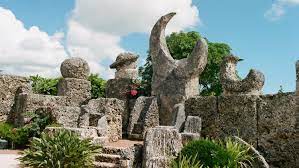
7. The Coral Castle (Homestead, Florida):
Built by a Latvian immigrant, this mysterious structure is made entirely of coral rock and features massive stone sculptures, including a 9-ton gate that moves with just a touch.
Coral Castle is an oolite limestone structure created by the Latvian-American eccentric Edward Leedskalnin (1887–1951).
It is located in the unincorporated territory of Miami-Dade County, Florida, between the cities of Homestead and Leisure City.
The structure comprises numerous large stones, each weighing several tons, sculpted into a variety of shapes, including slab walls, tables, chairs, a crescent moon, a water fountain, and a sundial.
It is currently a privately operated tourist attraction. Coral Castle is noted for legends surrounding its creation that claim it was built single-handedly by Leedskalnin using reverse magnetism or supernatural abilities to move and carve the stones

8. The Winchester Mystery House (San Jose, California):
This sprawling mansion was continuously under construction for 38 years and is known for its peculiar architectural features, such as staircases that lead to nowhere and doors that open onto walls.
The Winchester Mystery House is a mansion in San Jose, California, that was once the personal residence of Sarah Winchester, the widow of firearms magnate William Wirt Winchester.
The house became a tourist attraction nine months after Winchester's death in 1922.
The Victorian and Gothic-style mansion is renowned for its size and its architectural curiosities.
It is sometimes claimed to be one of the "most haunted places in the world", but there is no evidence to support this belief.
Much of the lore regarding the Winchester House and its owner is fanciful, unverified, and often provably false.
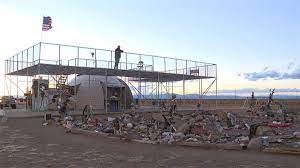
9. The UFO Watchtower (Hooper, Colorado):
A designated area for UFO enthusiasts, this watchtower offers a platform for visitors to observe the night sky and has become a gathering place for those interested in extraterrestrial phenomena.
The UFO Watchtower is an observation platform and campground north of Hooper, Colorado.
The watchtower, which has a 360-degree view of the San Luis Valley, was created by Judy Messoline in May 2000 to capitalize on the existing use of the property by UFO observers.
There have been TV documentaries done on the UFO sightings in the area and several books have been written on the subject.
Since its inception, it has received widespread United States and international media coverage.

10. The Museum of Bad Art (Dedham, Massachusetts):
Showcasing a collection of "art too bad to be ignored," this museum celebrates hilariously awful artwork and embraces the concept of "so bad, it's good."
The Museum of Bad Art (MOBA) is a privately owned museum whose stated aim is "to celebrate the labor of artists whose work would be displayed and appreciated in no other forum".
It was originally in Dedham, Massachusetts, and is currently in Boston, Massachusetts.
Its permanent collection includes over 700 pieces of "art too bad to be ignored", 25 to 35 of which are on public display at any one time.
MOBA was founded in 1993 after antique dealer Scott Wilson showed a painting he had recovered from the trash to some friends, who suggested starting a collection.
Within a year, receptions held in Wilson's friends' home were so well-attended that the collection needed its own viewing space.
The museum then moved to the basement of a theater in Dedham.
Explaining the reasoning behind the museum's establishment, co-founder Jerry Reilly said in 1995: "While every city in the world has at least one museum dedicated to the best of art, MOBA is the only museum dedicated to collecting and exhibiting the worst.
" To be included in MOBA's collection, works must be original and have serious intent, but they must also have significant flaws without being boring; curators are not interested in displaying deliberate kitsch.
MOBA has been mentioned in dozens of off-the-beaten-path guides to Boston, featured in international newspapers and magazines, and has inspired several other collections throughout the world.
Deborah Solomon of The New York Times Magazine noted that the attention the Museum of Bad Art receives is part of a wider trend of museums displaying "the best bad art".
The museum has been criticized for being anti-art, but the founders deny this, responding that its collection is a tribute to the sincerity of the artists who persevered with their art despite something going horribly wrong in the process.
According to co-founder Marie Jackson, "We are here to celebrate an artist's right to fail, gloriously.
These are just a few examples of the many strange and unique places you can find across America.
THANKS
BY
Tamer
Comments
